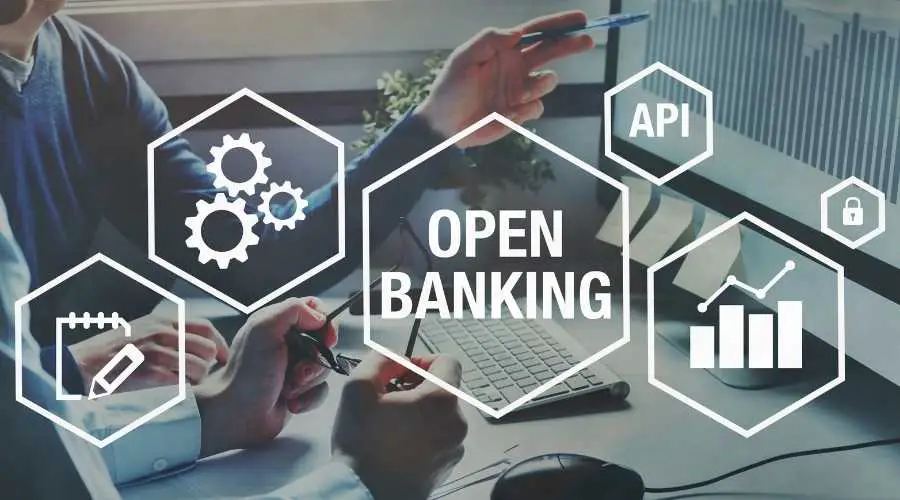Open banking APIs allow third-party developers to build applications that interact with a bank’s customer data and systems, which can create new opportunities for innovation in the banking sector.
In this article, we will explore how open APIs work in practice and give several examples of their use in the banking industry.
Table of Contents
- What Are Open Banking APIs?
- What Are the Benefits of Open Banking APIs?
- Banking API Portals
- 9 Open Banking API Examples
- Final Thoughts
What Are Open Banking APIs?
An Open Banking API is an application programming interface that allows third-party developers to access customer data and bank systems.
This type of API can be used to develop new applications and services that make use of banking data, such as transaction history or account balances.
Access to these APIs is based on a series of EU regulations known as the Second Payment Services Directive (PSD2), which aims to promote trust, competition and innovation in the banking sector by making customer data more accessible.
Just as Google offers an API that allows developers to access its search engine data and build new applications on top of it, banks can now offer similar APIs to allow third-party developers to access their customer data and build new services.
Customers must give their explicit consent for third-party developers to access their data, and banks must provide a secure way for this data to be shared.
What Are the Benefits of Open Banking APIs?
There are many benefits of open banking APIs for developers, businesses, banks and customers.
For banks, open banking APIs offer a way to modernize legacy systems and make them more agile. They also provide a way for banks to partner with fintech startups and other innovative companies to create new products and services.
For customers, open banking APIs offer a wide range of features and services. They can allow customers to view their account balances and transaction history from within the app. They can also enable customers to make payments or transfer money between accounts.
In addition, open banking applications could provide features such as budgeting tools, expenditure tracking, and financial goal setting.
Open banking APIs are a win-win for both banks and customers. They offer a way to modernize banking and make it more customer-centric.
For developers, these portals establish a level of trust with banks and businesses and open up a world of opportunity to create new banking applications.
Banking API Portals
Several major banks have already started offering open banking APIs to third-party developers.
For example, HSBC has an API portal that allows developers to register and access HSBC’s APIs. The portal also provides documentation and support to help developers get started.
Barclays has also launched an open banking API platform. The platform provides access to a wide range of Barclays’ APIs, including APIs for account information, payments, and transactions.
Bank of Scotland offers APIs and open data for developers relating to ATM and branch locations, as well as several product specific options for creating new customer interactions.
Wells Fargo also has an API portal that offers a suite of tools and sample code for developers along with a testing environment.
And newer digital banks, such as Ally, have also opened their APIs for developers looking to create financial applications.
These are just a few examples of the many banks that are already offering open banking APIs.
For an updated list, have a look at this open banking directory.
Let’s now look at some popular open banking API examples to see how this technology is being used in practice.
9 Open Banking API Examples

The following use cases demonstrate how open banking APIs are being used to create value for businesses and customers.
Authentication and Identity
Open banking APIs can be used to authenticate customers and verify their identity.
This helps to prevent fraud and ensures that only the customer has access to their data. It also helps to streamline the customer experience by eliminating the need for customers to remember multiple passwords.
Examples:
- LoginID is a low code solution that allows banks to use a biometric digital signature to confirm transactions and authenticate users.
- Salt Edge offers a Mobile SCA (strong customer authentication) application to handle dynamic linking and meet strigent SCA requirements.
Payment Processing
Open banking allows businesses to authenticate payments directly between consumers and their banks.
This helps to prevent fraud and ensures that payments, including international transfers, are processed quickly and smoothly. It also creates significant opportunities for developers to offer innovative solutions.
Examples:
- Adyen is a payment processing company that offers open banking APIs for account verification and payments processing.
- Fena is an app that allows users to transfer money between accounts quickly and easily.
- Wise (formerly TransferWise) allows you to transfer money abroad easily and quickly with low-cost money transfer options.
- Tikkie is an online Dutch payment app from ABN-AMRO that allows users to send payment via Whats App, text message, email and more.
Account Aggregators
With account aggregators, consumers can easily view all of their financial accounts in one place.
This gives them a complete overview of their finances and helps them to make more informed decisions about their money.
Examples:
- Plaid is a popular account aggregator that connects with over 11,000 financial institutions in the US, UK, Canada, and Australia.
- Yodlee is another account aggregation platform that offers APIs for developers to create financial applications and allows users to see multiple accounts at once (i.e. credit card, bank, investment, reward accounts, etc.)
Data Analytics
Open banking APIs also provide access to valuable customer data that can be used for marketing and analytics purposes.
This data can help businesses to better understand their customers and develop more targeted products and services.
Examples:
- Finicity is a financial data aggregator that offers an API platform with direct data agreements with large financial such as Chase, Wells Fargo, Capital One, CitiBank, Fidelity and more.
- MX offers open finance APIs to enable banks and companies to do more with financial data by aggregating, securing, and optimizing data.
Budgeting and Financial Planning
Personal finance is one of the most significant use cases for open banking APIs.
These apps can track user goals and spending habits and provide a suite of tools and recommendations for how to save and spend money more effectively.
Examples:
- Mint is a popular personal finance platform that offers budgeting and financial tracking tools.
- Emma is UK-based app that gives users an easy way to track, invest and save money.
- Pocketguard is a personal finance management application that enables users to connect all their financial accounts and create budgets, track their money and categorize their expenses.
Credit Scores
Open banking gives a more in-depth and personalized look at a consumer’s credit history by combining data from multiple sources.
This helps to provide a more accurate picture of an individual’s creditworthiness and financial history.
Examples:
- Experian Boost helps people with little credit history by giving them credit for on-time utility, telecom and certain streaming service payments.
- Credit Kudos enable businesses to leverage Open Banking to enhance affordability and risk assessments.
Business Accounting
Open banking APIs can streamline the accounting process for small businesses by automating the collection and categorization of financial data, including revenue and expenses.
This can help businesses to save time and money by reducing the need for manual data entry.
Examples:
- Xero is a popular accounting software that allows users to connect their bank accounts, imports transaction data, and streamlines accounting for small businesses, bookkeepers, and more.
- Sage integrates with banking platforms to automate bookkeeping and accounting workflows, speed up payments and manage cash flow.
- Wave connects with bank accounts and synchs across platforms to offer a user-friendly “one-stop money management” solution for small businesses.
Subscription Management
We all know that too many recurring subscriptions can drain expenses and cause a real headache for consumers (and banks).
With open API platforms, users can see all of their subscriptions in one place and cancel or modify them as needed.
Examples:
- Subaio is a Dutch subscription management service that integrates with online bank accounts and allows users to view, manage, and cancel their recurring subscriptions.
- Bud is another subscription management solution for banks allowing customers to keep track of and cancel subscriptions.
- Trim analyzes your transactions and finds and cancels your unwanted subscriptions
Tax Management
Open banking APIs can help businesses and individual taxpayers to manage their tax obligations by providing real-time visibility into financial data and even filing directly with your tax filing agency.
These apps also offer self-employed and small business accounting features to help users track expenses and income.
Examples:
- Coconut is a UK finance app that allows self-employed users to manage business finances and work out the correct amount of taxes owed.
- FreshBooks is a very popular accounting platform for solopreneurs and small businesses that includes a number of features, including tax reporting.
Final Thoughts
As you can see, there are a number of ways that open banking APIs are being used to create new and innovative financial products and services.
APIs are giving users more control over their finances, providing new insights into spending and saving habits, and simplifying the accounting process for businesses.
We can expect to see even more open banking API examples in the near future as banks undergo different phases of digital transformation and fintech startups continue to push the envelope.
